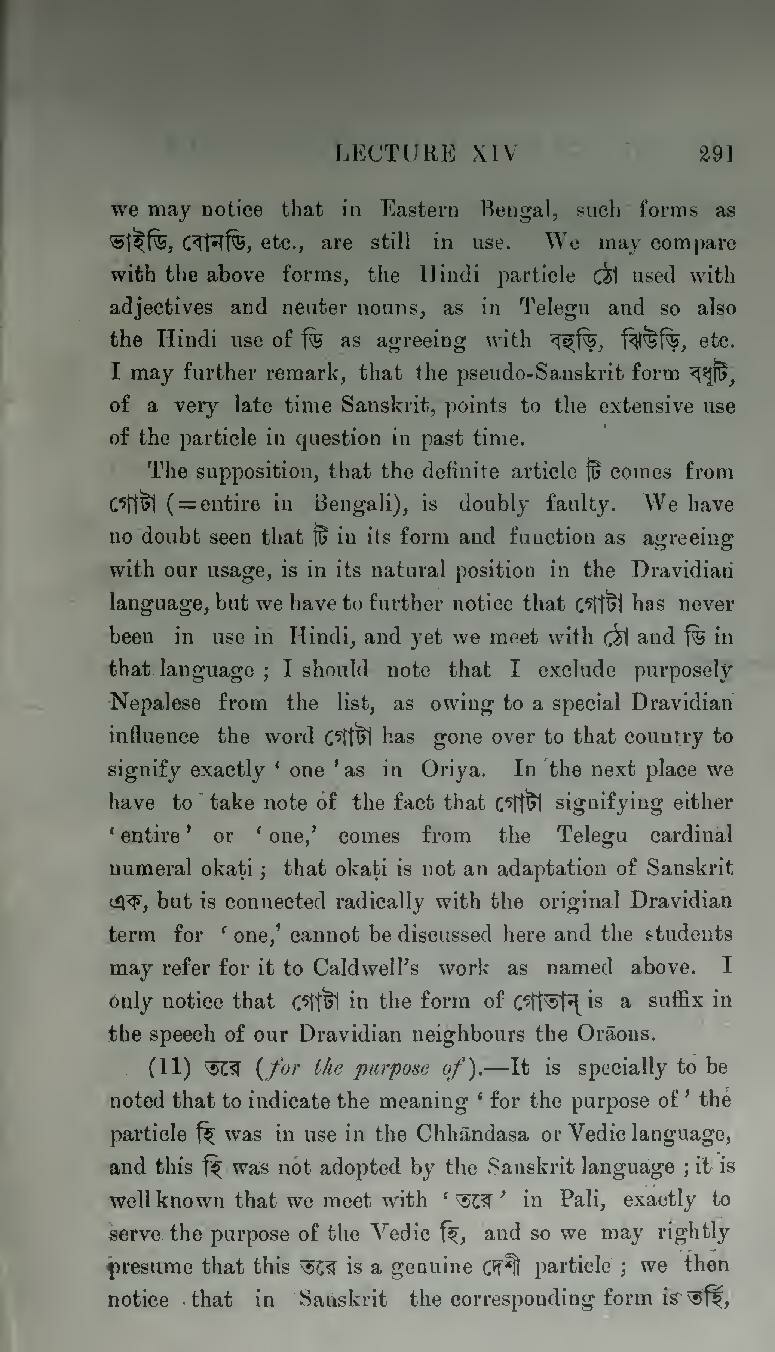we may notice that in Eastern Bengal, such forms as ভাইডি, বোনডি, etc., are still in use. We may compare with the above forms, the Hindi particle ঠো used with adjectives and neuter nouns, as in Telegu and so also the Hindi use of ডি as agreeing with বহুড়ি, ঝিউড়ি, etc. I may further remark, that the pseudo-Sanskrit form বধূটি, of a very late time Sanskrit, points to the extensive use of the particle in question in past time.
The supposition, that the definite article টি comes from গোটা (= entire in Bengali), is doubly faulty. We have no doubt seen that টি in its form and function as agreeing with our usage, is in its natural position in the Dravidian language, but we have to further notice that গোটা has never been in use in Hindi, and yet we meet with ঠো and ডি in that language; I should note that I exclude purposely Nepalese from the list, as owing to a special Dravidian influence the word গোটা has gone over to that country to signify exactly 'one' as in Oriya. In the next place we have to take note of the fact that গোটা signifying either 'entire' or 'one,' comes from the Telegu cardinal numeral okaṭi; that okaṭi is not an adaptation of Sanskrit এক, but is connected radically with the original Dravidian term for 'one,' cannot be discussed here and the students may refer for it to Caldwell's work as named above. I only notice that গোটা in the form of গোতান্ is a suffix in the speech of our Dravidian neighbours the Orāons.
(11) তরে (for the purpose of).—It is specially to be noted that to indicate the meaning 'for the purpose of' the particle হি was in use in the Chhāndasa or Vedic language, and this হি was not adopted by the Sanskrit language; it is well known that we meet with 'তরে' in Pali, exactly to serve the purpose of the Vedic হি, and so we may rightly presume that this তরে is a genuine দেশী particle; we then notice that in Sanskrit the corresponding form is তর্হি,
